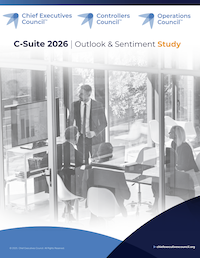Chief Operating Officers (COOs) should build a relationship with the Chief Executive Officer (CEO). Why? There are many challenges that create risks and building a relationship with the executive team can help these challenges. Below you will learn how the pandemic impacted the CEOs and COOs relationship.
As reported by Forbes on June 9, 2022 by Nate Bennett.
Dancing Alone Together: CEOs, COOs and The Global Pandemic
It’s critical for CEOs to get their relationship with the COO right. Each executive must be mindful of how current challenges create risks that the two might fall out of synch. The repercussions through the organization of such an event could be problematic. For over two years, the global pandemic has presented such a risk. Thus, the question is, how did the pandemic impact how CEOs and COOs work together to lead?
A metaphor that aptly conveys the work CEOs and their COOs perform to stay in synch is that of dance partners. When the two are skilled in their parts, not confused about who is leading, are practiced with one another, and committed to the performance, something artful results. When one or the other has two left feet, the organization’s performance will suffer.
The pandemic brought an abrupt end to working face-to-face, and executives lost the spontaneous synchronous interaction it offers. The result was that executing a flawless dance became much more challenging. Social media captured a pandemic-inspired phenomenon that illustrates how this might play out for CEOs and their COOs, that of dancing alone together. Since the late winter of 2020, that’s what these executives have been learning to do.
Conversations with COOs from around the globe revealed that, in the end, two primary challenges had to be overcome for the pair to continue to work seamlessly together while most often apart. The first of these challenges involved how to build healthy communication when spontaneous opportunities for face-to-face became near impossible. The second had to do with appreciating how to balance the need across the organization to speed up in some areas while slowing down in others.
Dancing alone together became necessary when the pandemic disrupted the patterns of interaction that CEOs and COOs had previously enjoyed. As Talia Grantham, the COO of Bright/Shift in London, shared, “I was used to sitting next door to the CEO – desk to desk. It was an abrupt shift to connecting only through a Zoom call or Slack. We both quickly recognized it created a dangerous potential for silos to emerge between our efforts. The easy back and forth to build upon one another’s ideas was gone overnight.” Laura Forese, MD, the EVP & COO of New York Presbyterian in New York City, shared that their board preferred that she and the CEO not be in the same place at the same time. She added, “We had spent years meeting in person essentially every day, so to have nine months without seeing each other in person required a huge change in our communication style and practice.”
Bill Santulli, the COO of Advocate Aurora Health in Chicago, shared that he and his CEO “have had more brief phone calls and sent many more texts over the last two years than we did the prior two. It was essential to replace what we lost from being in the building together.” Because spontaneous interactions were less available, CEOs and COOs also found it necessary to divide and conquer work more formally. As Mark Solazzo, the COO at Northwell Health, Long Island, New York, reported, “While I was figuring out how to create another 1000 beds, he was dealing with the government agencies and the media. In normal times, we would overlap more on the strategic piece and be much more collaborative in everything we do. We had to work deliberately to stay in sync because we had to operate more independently to manage the situation.”
If learning to dance together alone was not challenging enough, the pandemic created an environment with no steady tempo. Executives were consistent in their view that multiple tempos were present simultaneously. External pressures on operations were building accelerando in some elements of the business – things kept speeding up. Concurrently, leaders realized they had to slow down other parts of the company deliberately–rallentando was the day’s order. As a result, CEOs and COOs constantly adapted to different meters to keep in step with one another and with the organization’s needs.
Slowing down was important because everyone had so much to try and manage – homeschooling kids, mastering Zoom, etc. Previously routine issues like assuring staffing levels were sufficient could no longer be taken for granted. Since those everyday issues were no longer typical, leadership bandwidth was chewed up and unavailable for other tasks. As Santulli noted, “our operational leaders were absolutely consumed by the day-to-day challenges of staffing and problem solving and making sure we had enough equipment and supplies and all the basics.” Slowing down is the only way to protect leadership effectiveness in such a situation.
Others noted, though, that slowing down also provided some benefit. Grantham shared, “the loss of the temptation provided by spontaneity in communication did mean we were forced to be patient. While we lost spontaneity, perhaps some thoughtfulness was gained because you had to live with your idea before sharing it.” She elaborated, “It was interesting because spontaneous time feels free to use. The pandemic made us more sensitive to asking questions of one another just because we could versus interrupting someone because we needed input before we could move on.”
The prediction business is risky, so it is no surprise that when it comes to the lasting workplace impacts of the pandemic, plenty of today’s predictions will be lousy. With that warning, these conversations support three predictions about how the pandemic has impacted the way CEOs and COOs need to work together.
First, like the rest of us, these executives had to understand a world where face-to-face interaction became complex or rare. They had to learn new collaboration habits that depended on unfamiliar communication tools. Even with careful use, these tools may not be adequate, creating ongoing risk leaders must understand.
When it comes to effectively sharing nuanced information, the tools that symbolized communication during the pandemic – texts, emails, phone calls and Zooms – pale compared to face-to-face interaction. This is because these tools can’t carry as much information and are not as well-suited for providing and gathering feedback – they are less rich. It is reasonable to posit that the longer executives rely on these methods, the greater the risk of misalignment. This threat is not unique to the CEO-COO pair; the lack of communication richness poses a danger to employees throughout the organization. During the pandemic, executives had no choice but to rely on these tools. As circumstances improve, the choice will return. On one hand, the shift away from face-to-face encouraged better self-editing before taking time from another. Conversely, reliance on a less-rich tool increases the likelihood of drifting apart. These new tools have become familiar but as dancing together becomes safer, executives need to reconsider the cost/benefit they provide.
Second, the pandemic forced CEOs and COOs to demonstrate patience in slowing down some aspects of the operations to provide capacity to meet the acceleration required in other areas. As the effects of the pandemic wane, will this patience survive? Everyone is waiting to release pent-up energy in pursuit of opportunities lost to the pandemic and its restrictions. Leaders eager to pursue delayed strategic opportunities must continue to appreciate that patience will continue to be an asset. Even as circumstances for moving forward become more apparent, it will not be possible to make everything a priority. Stephen Miles, CEO of The Miles Group emphasized that “making proper decisions about what speeds up first will be critical, as will be a concentrated effort to communicate decisions that keep those chaffing at the bit from becoming disillusioned.”
One thing that won’t change for these executives in the future is the critical role of trust. As Miles notes, “unwavering alignment and deep trust are critical for an effective CEO-COO set up. This was tested more than ever during the pandemic.” Only when there is a great deal of trust between the CEO and COO can they effectively dance alone together. The pandemic must have been a nightmare for leaders stuck dancing with a partner they could not fully trust.
It will be as true from now on as it has been looking back; if the CEO and COO cannot develop deep trust, it will likely only be a matter of time before fissures appear between the two. Everything these executives can do to build trust is a well-made investment.
Due to the past two and half years, how has the relationship between the COO and CEO of your company changed?



0 Comments